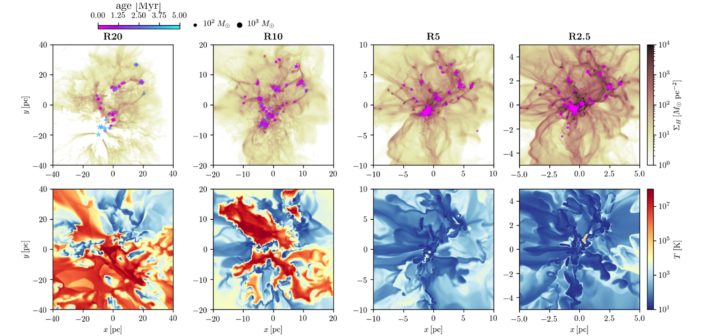When dusty molecular clouds collapse to form stars, competing forces vie for control. Gravity pulls ever inward while escaping photons, hot ionized gas, and stellar winds work to heat and disperse the cloud and bring star formation to a halt. In a new article, a team led by Lachlan Lancaster (Princeton University) used hydrodynamic modeling to explore the interplay between stellar winds and star formation. In the image above (click for a larger view!), simulations show how gas density (top row) and temperature (bottom row) vary in star-forming clouds of different sizes. The team’s modeling shows that the extent to which stellar winds disrupt star formation depends on the density of the cloud, with hot stellar winds cooling rapidly and driving out less material in dense clouds. Lancaster and collaborators discovered another role stellar winds play: in dense clusters, up to 1% of a young star’s mass can come from wind particles from stellar neighbors, with potential implications for chemical abundances in cluster stars. To learn more, see the full article below.
Citation
“Star Formation Regulation and Self-pollution by Stellar Wind Feedback,” Lachlan Lancaster et al 2021 ApJL 922 L3. doi:10.3847/2041-8213/ac3333
